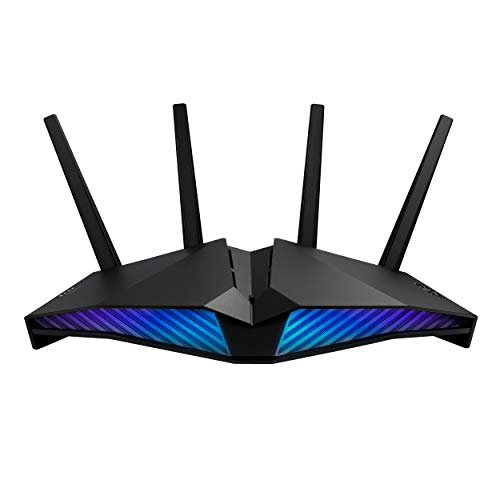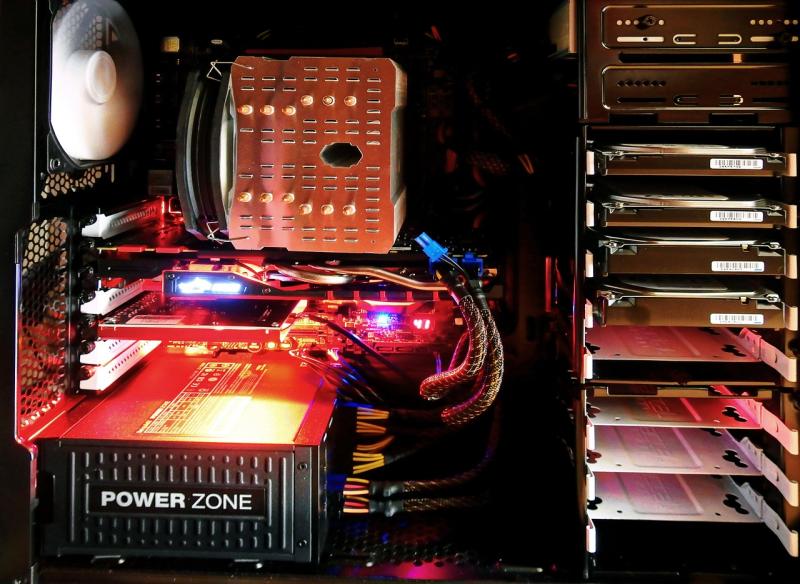In remote work environments, a secure and fast network is critical for high‑performance PCs. Advanced strategies for network security ensure that sensitive data remains protected while maintaining optimal connectivity for collaborative tasks and productivity.
Deploy robust firewalls, VPNs, and intrusion detection systems to secure your network. Configure routers with strong encryption standards and regularly update firmware to mitigate vulnerabilities. Separate work-related traffic from personal devices through VLANs and prioritize bandwidth allocation for critical applications.
Invest in high‑speed, low‑latency routers and network adapters that support the latest wireless standards such as Wi‑Fi 6. Use wired connections where possible, and monitor network performance using diagnostic tools to identify and address bottlenecks. Regular training on cybersecurity best practices is also essential for remote teams.
Securing your network for remote work involves a comprehensive approach that blends advanced security measures with optimized connectivity. With robust protection and efficient network management, your high‑performance PC will remain secure and responsive, ensuring a seamless remote work experience.
Advanced Network Security & Connectivity Strategies for Remote High-Performance PCs
Introduction
In today’s distributed business landscape, remote work is the norm, not the exception. For professionals relying on high-performance PCs to design, render, code, or crunch data, a network must be more than just functional—it must be both ultra-fast and bulletproof. Advanced network security strategies shield sensitive information from cyberthreats, while optimized connectivity sustains collaboration, interactive sessions, and heavy data transfers without hiccups. This deep-dive guide arms you with cutting-edge techniques to build a secure, resilient, and high-throughput network tailored for remote teams powering high-performance workstations.
1. Building a Multi-Layered Security Framework
A single security appliance is no longer sufficient against today's sophisticated threat landscape. Embrace defense-in-depth:
1.1 Next-Generation Firewalls (NGFW)
- Application-aware filtering inspects traffic beyond ports—blocking unauthorized apps and malicious payloads.
- Integrated threat intelligence feeds automatically update rulesets to catch zero-day exploits.
- SSL/TLS decryption lets your firewall scan encrypted traffic without compromising privacy.
1.2 Secure Access via VPN & Zero Trust
- IPsec and SSL VPNs: Use high-grade AES-256 encryption, perfect forward secrecy, and certificate-based authentication.
- Zero Trust Network Access (ZTNA): Grant least-privilege access at the application layer—never trust, always verify.
- Secure Access Service Edge (SASE): Cloud-delivered security stack (FWaaS, CASB, SWG) that combines network and security as a unified service.
1.3 Intrusion Detection & Prevention (IDS/IPS)
- Signature-based IDS catches known threats; anomaly-based IDS leverages machine learning to flag unknown attacks.
- Inline IPS can actively block malicious traffic, quarantine compromised hosts, and trigger automated response playbooks.
1.4 Endpoint Detection & Response (EDR) & Extended Detection and Response (XDR)
- EDR Agents monitor endpoint behavior, identify ransomware-style encryption or lateral movement, and isolate infected machines.
- XDR Platforms unify telemetry from endpoints, network, and cloud, offering a holistic view of an incident and correlating alerts.
2. Advanced Segmentation & Traffic Management
Isolating your remote workforce’s data flows removes single points of failure and attack:
2.1 VLANs & Microsegmentation
- VLANs separate workstations, voice traffic, and IoT devices—minimizing broadcast domains and attack surfaces.
- Microsegmentation (via software-defined networking) isolates workflows or user groups at the packet level, enforcing policy per workload.
2.2 Quality of Service (QoS) & Traffic Shaping
- Prioritize real-time applications (video conferencing, VoIP, remote desktop) with strict QoS policies to guarantee sub-50 ms latency.
- Traffic shaping limits bandwidth for non-critical transfers—ensuring collaborative apps always have headroom.
2.3 SD-WAN & WAN Optimization
- SD-WAN intelligently routes traffic across multiple links (MPLS, broadband, LTE) for cost savings and path failover.
- WAN Accelerators leverage compression, deduplication, and protocol optimization to speed up file replication and cloud storage access.
3. High-Performance Connectivity Upgrades
Even the best security is moot if your network chokes under load. Invest in premium infrastructure:
3.1 Cutting-Edge Wireless Standards
- Wi-Fi 6 (802.11ax) provides OFDMA and MU-MIMO, delivering multi-gigabit throughput in crowded environments.
- Wi-Fi 6E expands into the 6 GHz band, reducing interference and offering ultra-low-latency channels for real-time collaboration.
3.2 Multi-Gigabit Ethernet & Power over Ethernet (PoE)
- 2.5G, 5G, and 10G Ethernet switches eliminate bottlenecks between your high-performance PC and network core.
- PoE ++ (IEEE 802.3bt) powers high-density access points and cameras, simplifying cabling in home offices.
3.3 Redundant ISP Links & Cellular Failover
- Dual or Quad-ISP setups with automatic failover ensure uninterrupted internet even if one provider falters.
- 4G/5G LTE routers can kick in during outages, keeping mission-critical applications online.
4. Continuous Monitoring & Diagnostics
Proactive visibility catches issues before they escalate:
4.1 Network Telemetry & Flow Analysis
- NetFlow, IPFIX, sFlow: Analyze flow records to identify bandwidth hogs, suspicious traffic spikes, and protocol anomalies.
- Telemetry Streaming via gNMI/gRPC for real-time performance metrics and automated anomaly detection.
4.2 Performance & Availability Tools
- Active Probing (iPerf, Speedtest CLI) quantifies throughput and latency across links on a scheduled basis.
- Synthetic Transactions simulate VPN logins, file uploads, and application access to verify end-user experience.
4.3 Dashboards & Automated Alerts
- Grafana, Zabbix, PRTG, SolarWinds NPM: Correlate CPU, memory, interface stats, and application health on single-pane-of-glass dashboards.
- Threshold-based notifications trigger email, SMS, or Slack alerts on QoS violations, device failures, or security breaches.
5. Rigorous Patch, Firmware & Configuration Management
Vulnerabilities live in outdated software—close them swiftly:
5.1 Centralized Patch Orchestration
- WSUS or SCCM for Windows-based network devices; Ansible/Chef for Linux routers and switches.
- Automated compliance scans ensure all devices run the latest OS, driver, and firmware versions.
5.2 Configuration Versioning & Drift Detection
- Git-backed config repos track changes to firewall ACLs, VLANs, and routing policies.
- Drift Detection solutions compare running configs to approved baselines, alerting on unauthorized modifications.
6. Strengthening Endpoints & Applications
A secure network demands hardened PCs and resilient applications:
6.1 Host-Based Security Controls
- Local Firewalls with strict inbound/outbound rules tailored to remote-work applications.
- Application Allowlisting: Only permit signed, approved executables to run on high-risk workstations.
6.2 Cloud Access Security Brokers (CASB)
- CASB Gateways enforce encryption, DLP, and policy compliance for SaaS applications (Office 365, Google Workspace, Salesforce).
- Shadow IT Discovery uncovers unauthorized cloud apps used by remote staff.
7. Human Element: Policy, Training & Incident Response
Technology is only as strong as the people who use it:
7.1 Cybersecurity Awareness Programs
- Phishing Simulations: Quarterly tests that educate employees on identifying and reporting suspicious emails.
- Password Hygiene: Enforce password managers, complex passphrases, and device lock policies.
7.2 Remote Work Acceptable Use Policy
- Clearly define BYOD guidelines, VPN usage, and prohibited behaviors (public Wi-Fi without corporate VPN).
- Mandate MFA and device-encryption standards for any endpoint connecting to corporate resources.
7.3 Incident Response Planning
- Tabletop Exercises simulate breaches—training teams on containment, eradication, and recovery steps.
- Maintain a runbook for network isolation, forensic evidence collection, and communication protocols.
8. Disaster Recovery & Resilience
Prepare for the worst to ensure business continuity:
8.1 Redundant Core & Edge Designs
- Dual routers and switches with VRRP or HSRP failover ensure network uptime if one device fails.
- Geographically dispersed backups for on-premises infrastructure and cloud-based assets.
8.2 Data Backups & Snapshots
- Regular snapshots of critical configuration files, VMs, and database servers.
- Offsite replication via secure tunnels to secondary data centers or cloud vaults.
8.3 Business Continuity Testing
- Full-scale drills at least annually to validate RTO (Recovery Time Objective) and RPO (Recovery Point Objective).
- Review and adjust plans based on emerging risks like ransomware double-extortion or supply-chain attacks.
Conclusion
Securing and accelerating your remote-work network for high-performance PCs demands a holistic, multi-layered strategy. From advanced firewalls, VPNs, and intrusion prevention to meticulous segmentation, continuous monitoring, and robust training programs, each component plays a vital role. Investing in Wi-Fi 6/6E, multi-gigabit infrastructure, and redundant ISPs guarantees ultra-low latency and unwavering connectivity. Meanwhile, proactive patch management and incident response drills ensure you stay one step ahead of threats.
By intertwining these advanced security measures with performance-driven optimizations, you’ll cultivate a network environment that is as resilient as it is rapid—empowering your remote workforce to collaborate, create, and innovate without compromise.
Ready to transform your network?
Visit our online store for enterprise-grade firewalls, Wi-Fi 6 routers, VPN appliances, and professional consultation services. Equip your team with the tools and expertise to thrive in the remote-first era.







